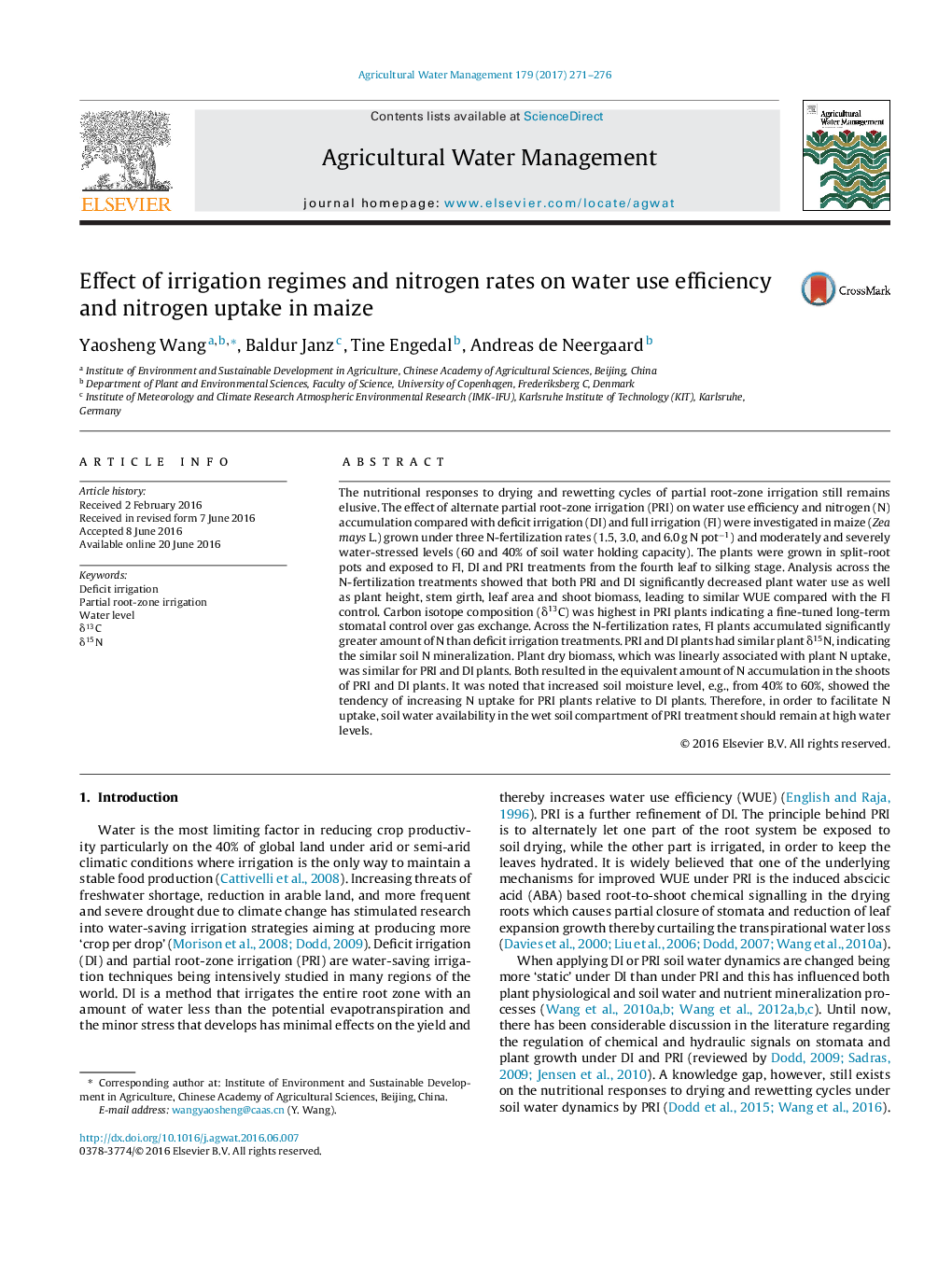| Article ID | Journal | Published Year | Pages | File Type |
|---|---|---|---|---|
| 5758612 | Agricultural Water Management | 2017 | 6 Pages |
â¢PRI and DI under moderately and severely watering levels had similar WUE and significantly lower plant N uptake compared to well-watered treatment.â¢PRI plants had the highest δ13C indicating the better control of stomata compared to DI plants..â¢PRI and DI plants had significantly higher plant δ15N than FI treatment, indicating a greater contribution of N from soil organic N pool to N uptake.â¢Sustaining high water levels in PRI wet soil zone is critical for improving N uptake.
The nutritional responses to drying and rewetting cycles of partial root-zone irrigation still remains elusive. The effect of alternate partial root-zone irrigation (PRI) on water use efficiency and nitrogen (N) accumulation compared with deficit irrigation (DI) and full irrigation (FI) were investigated in maize (Zea mays L.) grown under three N-fertilization rates (1.5, 3.0, and 6.0 g N potâ1) and moderately and severely water-stressed levels (60 and 40% of soil water holding capacity). The plants were grown in split-root pots and exposed to FI, DI and PRI treatments from the fourth leaf to silking stage. Analysis across the N-fertilization treatments showed that both PRI and DI significantly decreased plant water use as well as plant height, stem girth, leaf area and shoot biomass, leading to similar WUE compared with the FI control. Carbon isotope composition (δ13C) was highest in PRI plants indicating a fine-tuned long-term stomatal control over gas exchange. Across the N-fertilization rates, FI plants accumulated significantly greater amount of N than deficit irrigation treatments. PRI and DI plants had similar plant δ15N, indicating the similar soil N mineralization. Plant dry biomass, which was linearly associated with plant N uptake, was similar for PRI and DI plants. Both resulted in the equivalent amount of N accumulation in the shoots of PRI and DI plants. It was noted that increased soil moisture level, e.g., from 40% to 60%, showed the tendency of increasing N uptake for PRI plants relative to DI plants. Therefore, in order to facilitate N uptake, soil water availability in the wet soil compartment of PRI treatment should remain at high water levels.
